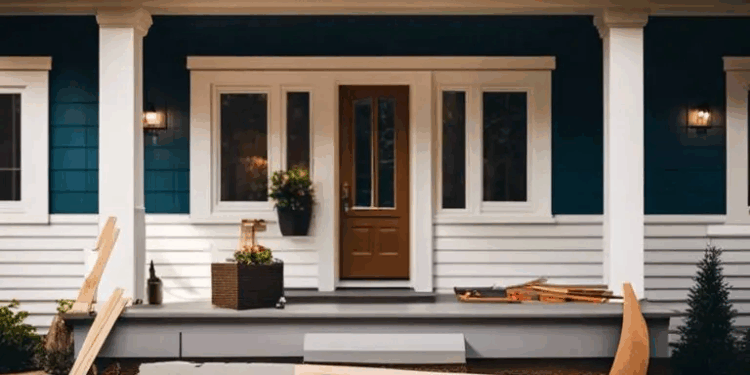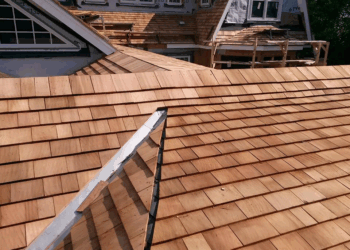
As exterior siding trim takes center stage, this opening passage beckons readers into a world crafted with good knowledge, ensuring a reading experience that is both absorbing and distinctly original. From exploring different types of siding trims to learning about installation and maintenance, this comprehensive guide covers it all.
Whether you’re a homeowner looking to spruce up your property or a DIY enthusiast eager to tackle a new project, understanding the ins and outs of exterior siding trim is key to achieving a polished look for your home.
Types of Exterior Siding Trim
When it comes to exterior siding trim, there are several types available on the market. Each type has its own unique characteristics, advantages, and disadvantages.
Wood Siding Trim
Wood siding trim is a popular choice for its natural beauty and versatility. It can be easily customized to fit the specific design of a house. However, wood trim requires regular maintenance, such as painting or staining, to prevent rot and decay.
Vinyl Siding Trim
Vinyl siding trim is known for its low maintenance and durability. It is available in a wide range of colors and styles, making it a versatile option for homeowners. On the downside, vinyl trim can crack or fade over time, and it may not offer the same aesthetic appeal as wood trim.
Fiber Cement Siding Trim
Fiber cement siding trim is a durable and long-lasting option that can mimic the look of wood without the maintenance issues. It is resistant to rot, fire, and insects, making it a practical choice for many homeowners. However, fiber cement trim can be more expensive than other materials, and installation may require professional help.
Metal Siding Trim
Metal siding trim, such as aluminum or steel, is known for its strength and resistance to the elements. It is low maintenance and can last for many years without needing to be replaced. However, metal trim can dent or scratch easily, and it may not offer the same warmth and aesthetic appeal as wood or fiber cement trim.
Installation of Exterior Siding Trim
Installing exterior siding trim is an essential step in completing the look of your home’s exterior. Proper installation not only enhances the aesthetic appeal but also helps protect your home from the elements. Here is a step-by-step guide on how to install exterior siding trim.
Tools and Materials Needed
Before starting the installation process, make sure you have the following tools and materials ready:
- Measuring tape
- Miter saw
- Hammer
- Nails
- Level
- Caulk gun
- Exterior trim boards
- Primer and paint
- Siding nails or screws
- Trim adhesive
Step-by-Step Installation Guide
- Measure and cut the exterior trim boards to the required lengths using a miter saw.
- Prepare the surface by ensuring it is clean, dry, and free of any debris.
- Begin by installing the corner pieces first, ensuring they are plumb and level.
- Secure the trim boards to the wall using siding nails or screws, making sure to leave space for expansion and contraction.
- Apply trim adhesive to any joints or seams to provide extra stability.
- Finish by caulking any gaps between the trim and siding to prevent water infiltration.
Common Installation Mistakes to Avoid
- Avoid cutting the trim boards too short or too long, as this can lead to gaps or overlapping.
- Do not skip priming and painting the trim boards before installation, as this can reduce their lifespan.
- Avoid using the wrong type of fasteners or adhesive, as this can compromise the stability of the trim.
- Avoid installing the trim too tightly against the siding, as this can restrict movement and lead to warping or buckling.
Maintenance of Exterior Siding Trim
Regular maintenance of exterior siding trim is essential to preserve its appearance and extend its lifespan. Different types of exterior siding trims require specific care to keep them looking their best and functioning properly.
Wood Siding Trim
Wood siding trim requires regular cleaning to prevent mold, mildew, and rot. Use a mild detergent and water solution to scrub the trim gently. Make sure to rinse thoroughly and allow the trim to dry completely before painting or staining.
Inspect for any signs of damage or decay regularly and address them promptly to prevent further deterioration.
Vinyl Siding Trim
Vinyl siding trim is relatively low maintenance but still needs occasional cleaning to remove dirt, dust, and grime. Use a mixture of water and mild soap to clean the trim with a soft brush or cloth. Avoid using abrasive cleaners or harsh chemicals that could damage the vinyl.
Inspect for cracks, chips, or fading and replace or repair as needed.
Fiber Cement Siding Trim
Fiber cement siding trim is durable but can benefit from regular cleaning to maintain its appearance. Use a soft brush or cloth with a mild detergent and water solution to clean the trim. Avoid high-pressure washing, as it can damage the surface.
Inspect for any signs of moisture or damage, especially at joints or corners, and repair as necessary.
Tips for Cleaning and Preservation
- Regularly clean siding trim to prevent dirt buildup and maintain its appearance.
- Avoid using harsh chemicals or abrasive cleaners that can damage the trim.
- Inspect for any signs of damage, moisture, or rot and address them promptly.
- Consider applying a protective sealant or paint to further protect the trim from the elements.
Importance of Regular Maintenance
Regular maintenance of exterior siding trim is crucial to prolonging its lifespan and preventing costly repairs or replacements. By taking care of your siding trim, you can ensure that your home remains beautiful and well-protected for years to come.
Design Ideas with Exterior Siding Trim
When it comes to enhancing the curb appeal of your home, exterior siding trim can play a crucial role in adding style and character. There are various creative design options that can be explored to make a statement and accentuate architectural features.
Accentuating Architectural Features
Exterior siding trim can be used to highlight key architectural elements of your home, such as windows, doors, and corners. By choosing a contrasting color or a different trim profile, you can create visual interest and draw attention to these features.
- For windows: Consider framing your windows with a thicker trim or adding decorative trim pieces around them to make them stand out.
- For doors: Use trim to create a welcoming entrance by framing the door with a bold color or adding trim details like pilasters or pediments.
- For corners: Enhance the corners of your home with corner trim pieces that can add depth and dimension to the overall look.
Color Choices and Combinations
Choosing the right colors for your exterior siding trim is essential to achieving a cohesive and visually appealing look. Here are some color combinations that work well with different types of siding trims:
| Siding Material | Recommended Trim Colors |
|---|---|
| Wood | White, black, dark green |
| Vinyl | Neutral tones like beige, taupe, or gray |
| Fiber Cement | Bold colors like navy blue, burgundy, or forest green |
Closing Summary
In conclusion, exterior siding trim offers a world of possibilities for elevating the aesthetics of your home. By choosing the right type, mastering the installation process, and committing to regular maintenance, you can ensure that your siding trim remains a standout feature for years to come.
Dive into the realm of exterior siding trim and transform your home’s exterior with style and flair.
Questions Often Asked
What are the main types of exterior siding trim?
There are various types available including wood, vinyl, fiber cement, and metal siding trims, each with their own set of pros and cons.
How do I install exterior siding trim?
Follow a step-by-step guide and ensure you have the necessary tools and materials. Avoid common installation mistakes for a seamless finish.
What maintenance is required for exterior siding trim?
Regular maintenance is essential to preserve the appearance and lifespan of siding trims. Different materials may require specific care.
Can exterior siding trim enhance curb appeal?
Absolutely! Creative design options using siding trim can accentuate architectural features and add visual interest to your home’s exterior.
What colors work well with different types of siding trims?
Choosing the right color combinations can make a significant impact. Consider the material and style of siding trim to select complementary colors.














